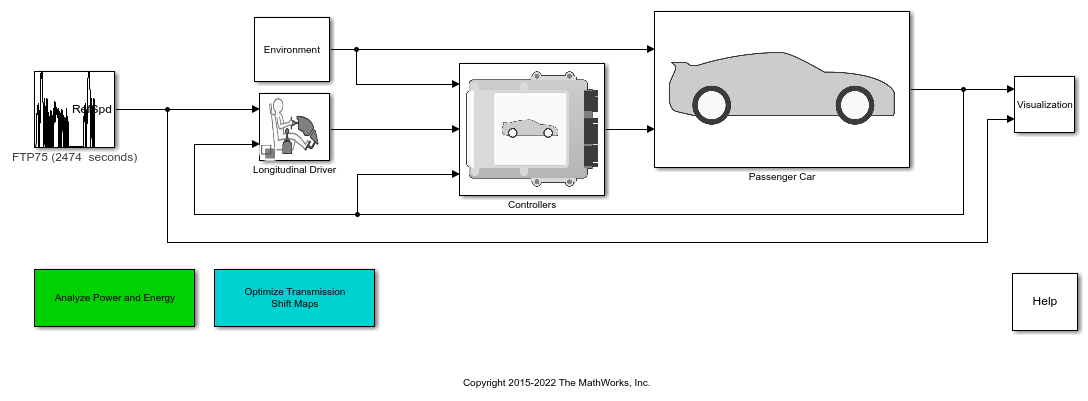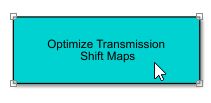Optimize Transmission Control Module Shift Schedules
This example shows how to use the conventional vehicle reference application to optimize the transmission control module (TCM) shift schedules. Use the optimized shift schedules to:
Design control algorithms.
Assess the impact of powertrain changes, such as an engine or gear ratio, on performance, fuel economy, and emissions.
This example uses the Global Optimization Toolbox, Simulink® Design Optimization™, and Stateflow®. To increase optimization performance, consider using the Parallel Computing Toolbox™.
For more information about the reference application, see Build Conventional Vehicle Model.
Open Reference Application
Open a version of the conventional vehicle reference application that includes the option to optimize transmission shift maps.
autoblkConVehShftOptStart;

Run Conventional Vehicle Reference Application
Click Run to simulate the conventional vehicle reference application with the default settings. The results indicate that the conventional vehicle has an average fuel economy of approximately 38 mpg.

Optimize Transmission Shift Maps
Click Optimize Transmission Shift Maps. Optimizing the shift schedules can take time to run. If you have the Parallel Computing Toolbox, the optimization uses parallel workers by default. View the optimization in the MATLAB® window.

View Results
After you optimize the shift schedule, view the results.
The performance scope indicates that the conventional vehicle with an optimized TCM shift schedule has an average fuel economy of approximately 40 mpg.

The figure shows the transmission shift schedule upshift and downshift calibration lines before and after optimization.
